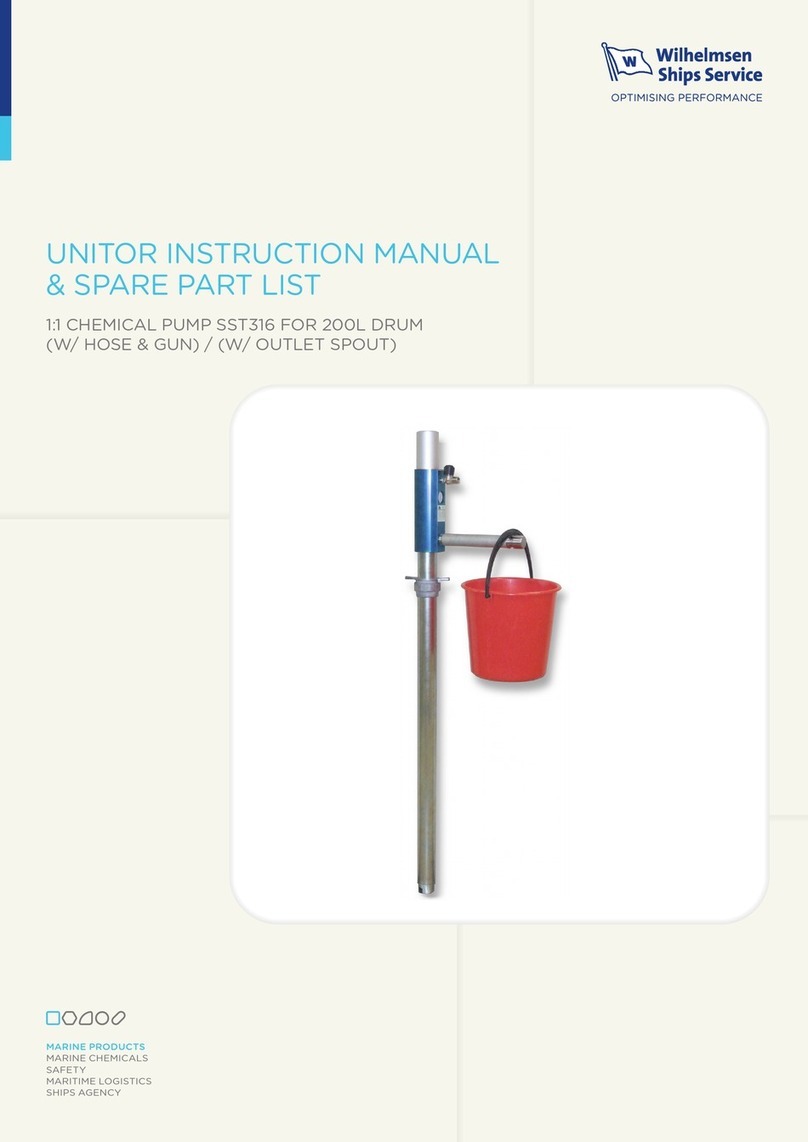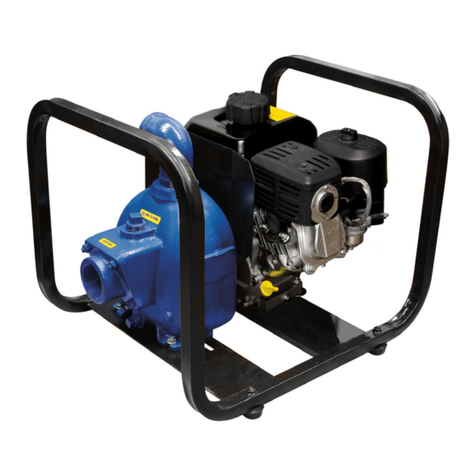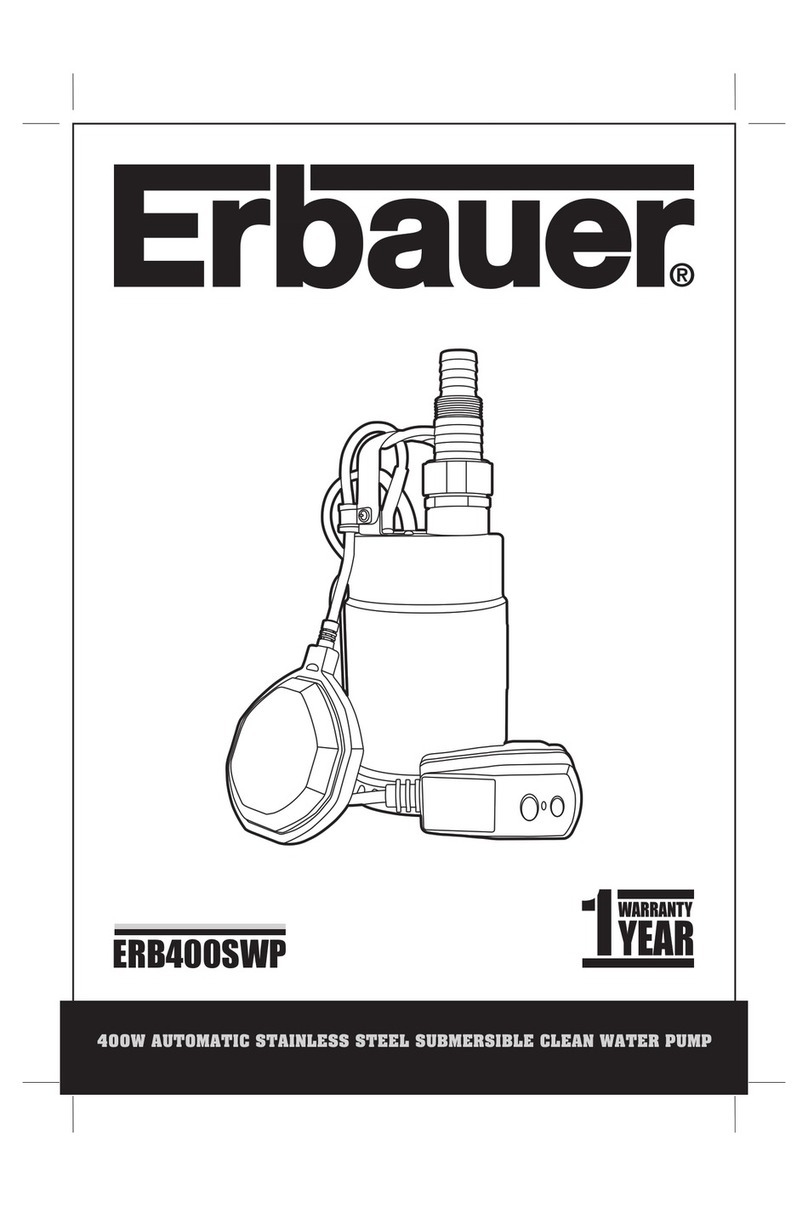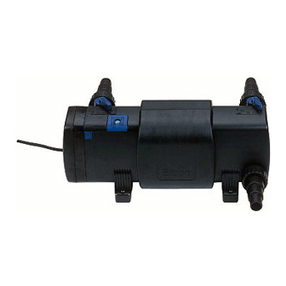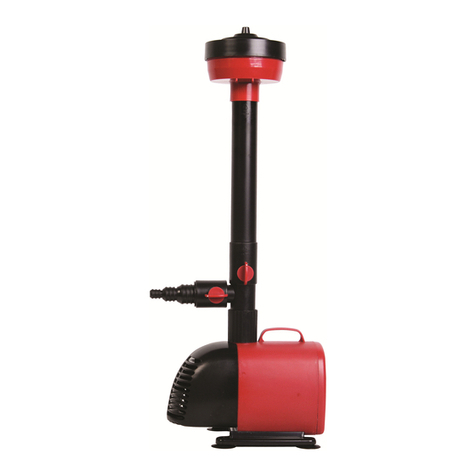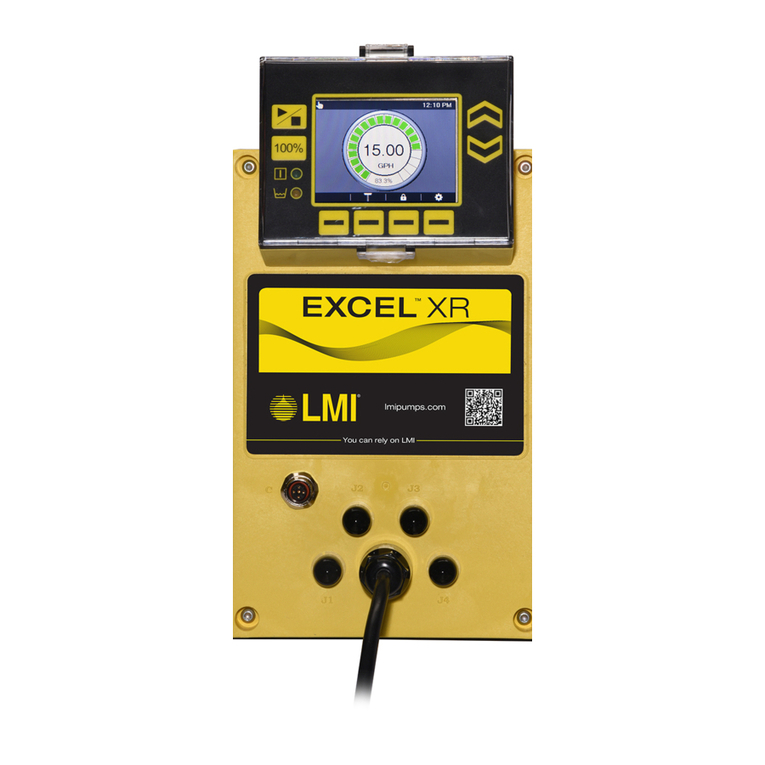Yoshitake PF-7000 User manual

-1-
■EPDT-292■
PF-7000
PUMPING TRAP
INSTRUCTION MANUAL
.
Thank you very much for choosing the Yoshitake’s product. To ensure the correct and safe use of the product,
please read this manual before use. This manual shall be kept with care for future references.
The symbols used in this manual have the following meanings.
Warning
This symbol indicates a potentially hazardous situation that, if not avoided,
could result in death or serious injury.
Caution
This symbol indicates a hazardous situation that, if not avoided, may result in
minor or moderate injury or may result in only property damage.
Table of Contents
1. Specifications···························································· 1
2. Dimensions and Weights············································· 2
3. Structure·································································· 2
4. Operation································································· 3
5. Flow rate·································································· 4
6. Installation
6.1 Piping example··················································5-6
6.2 Warning and caution for installation ·······················7-8
7. Operation procedure
7.1 Warning and caution for operation ··························· 9
7.2 Operation method ················································ 9
8. Maintenance
8.1 Warning and caution for maintenance and inspection·10
8.2 Daily and Periodic inspection/Periodic replacement
8.2.1 Daily inspection ···········································10
8.2.2 Periodic inspection·······································11
8.2.3 Periodic replacement····································11
8.3 Troubleshooting············································· 12-13
8.4 Disassembly/assembly method
8.4.1 Warning and caution for disassembly/assembly ·13
8.4.2 Disassembly method ······························· 14-15
8.4.3 Assembly method ··································· 16-18
8.4.4 How to replace each part·······························19
9. Exploded view··························································20
Warranty Information

-1-
■EPDT-292■
1. Specifications
Model PF-7000
Nominal size
25A (Condensate inlet: 25A / Condensate outlet: 25A)
40A (Condensate inlet: 40A / Condensate outlet: 40A)
50A (Condensate inlet: 50A / Condensate outlet: 50A)
80A (Condensate inlet: 80A / Condensate outlet: 50A)
Application Steam condensate / Non-hazardous fluid
Driving fluid Steam / Air
Max. driving pressure 0.8 MPa *1
Max. working temperature 180°C
Material Body Ductile cast iron
Trim parts Stainless steel
Float (P) Stainless steel
Connection JIS Rc screwed
Check valve at inlet side Externally attached *2
Check valve at outlet side Externally attached *2
*1 The most appropriate value of driving pressure is back pressure at outlet side + 0.1 to 0.2 MPa.
*2 Attach an optional check valve (SCV-2 or SCV-3) on inlet and outlet side of the product.
Caution Please confirm that the indications on the product correspond with the
specifications of the ordered product model before use.
* If they are different, please contact us without using the product.

-2-
■EPDT-292■
2. Dimensions and Weights
*
Bush is attached at condensate inlet for the product of size 50A, and at condensate inlet and outlet for size
40A or less.
* The unit is mm.
Fig. 1: Dimensions
3. Structure
Fig. 2: Structure
Size d
1
d
2
L Weight
(kg)
25A Rc1 Rc1 544 92
40A Rc1-1/2
Rc1-1/2
549 92
50A Rc2 Rc2 525 91
80A Rc3 Rc2 500 90
Driving
fluid port Vent port
Rc1/2 Rc1
No. Part name
1 Body
2 Cover
4 Vent valve P
5 Vent valve seat
6 Inlet valve P
9 Float
10 Cap
12 Hex bolt
13 Hex bolt
14 Square head plug
15 Eye bolt
16 Name Plate

-3-
■EPDT-292■
4. Operation
<State 1>
Condensate flows into body [1] via the condensate inlet and then float [9] moves upward due
to buoyancy. (See Fig. 3.) In this state, vent valve part of vent valve P is open and inlet valve
part of inlet valve P is closed.
Fig. 3
<State 2>
When condensate level rises and float [9] reaches the height at which vent valve part of vent
valve P [4] closes, inlet valve part of inlet valve P [6] opens, and driving pressure enters body
[1]. Condensate inside body [1] is transferred to condensate outlet and discharged. (See Fig.
4.) When condensate is discharged, float [9] moves downward in line with water level in body
[1]. When it drops to the height at which vent valve part of vent valve P [4] opens, inlet valve
part of inlet valve P [6] is closed. Then, internal pressure is released by vent valve, returning
to the above state 1.
Fig. 4
Enlarged view
Enlarged view

-4-
■EPDT-292■
5. Flow rate
<Driving fluid: steam>
<Driving fluid: air>
* Flow rate described above indicates condensate volume when condensate flow-in height is
1,000 mm above the bottom of the product. (See 6.1 Piping example)
Discharge capacity varies depending on condensate flow-in height. Multiply the volume by the
following factors according to condensate flow-in height.
* The height below is the level above the bottom of the product
Driving
fluid Condensate flow-in height [mm]
800 1000 1200 1400
Steam 0.85 1.00 1.05 1.15
Air 0.85 1.00 1.15 1.30
Discharge capacity varies depending on size of condensate inlet and outlet. Multiply the volume
by the following factors according to size.
Driving
fluid Size (Condensate inlet – outlet)
80A-50A
50A-50A
40A-40A
25A-25A
Steam
1.00 0.90 0.70 0.35
Air
1.00 0.95 0.70 0.30
Driving pressure
Driving pressure
Driving pressure
Driving pressure Driving pressure
Back pressure
Back pressure

-5-
■EPDT-292■
6. Installation
6.1 Piping example
<Open system>
Fig. 5
No.
Name No.
Name No. Name
1 Pumping Trap 6
Pressure reducing
valve GD-30 15A 11 Sight glass
PF-7000 (GD-1000T 15A
if driving fluid is air)
SLM-1S or 1F 50A
2 Strainer 7 Strainer
SY-5 15A
(80 mesh) SY-5 15A
(80 mesh)
3 Steam trap 8 Strainer
TD-10NA 15A SY-40 80A
(80 mesh)
4 Check valve 9 Check valve
SCV-2 or 3 15A SCV-3 80A
5 Sight glass 10
Check valve
SLM-1S 15A SCV-2 or 3 50A

-6-
■EPDT-292■
<Closed system>
Fig. 6
No.
Name No.
Name No.
Name
1 Pumping Trap 6
Pressure reducing
valve 11 Sight glass
PF-7000 GD-30 15A SLM-1S or 1F 50A
2 Strainer 7 Strainer 12 Check valve
SY-5 15A
(80 mesh) SY-5 15A
(80 mesh) SCV-2 or 3 15A
3 Steam trap 8 Strainer
TD-10NA 15A SY-40 80A
(80 mesh)
4 Check valve 9 Check valve
SCV-2 or 3 15A
SCV-3 80A
5 Sight glass 10 Check valve
SLM-1S 15A SCV-2 or 3 50A

-7-
■EPDT-292■
6.2 Warning and caution for installation
Warning
1. Condensate may blow out from vent port following driving pressure drop or stop or failure of the
product. Connect a pipe to the port and extend the pipe to safe place.
* Failure to follow this notice may scald your skin by blowout of condensate.
Caution
1. Before installing the product, remove foreign substances and scale from the piping, and note that
seal materials must not flow into the inside of the product or piping.
* Commingling of foreign substances such as scale or seal material leads to malfunction of the
product.
2. Before connecting pipes, check the condensate inlet, condensate outlet, driving fluid port and vent
port. (See 6.1. Piping example.)
* The product does not function properly if piping is not connected correctly.
3. Install the product horizontally, with vent port facing upward.
* The product does not function properly if installation direction is not correct.
4. Connect the product to piping firmly.
* Failure to follow this notice may cause burn injury by leakage of condensate from joints due to
vibration.
5. Use union joints, etc. for connection with pipes. (See 6.1. Piping example.)
* If union joints, etc. are not used, removal of pipes may become impossible or require more time
in disassembly/assembly for maintenance/inspection.
6. Do not apply any shocks such as water hammer. Avoid using quick open/close valves at inlet
/outlet side of the product.
* Failure to follow this notice may cause burn injury by blowout of condensate caused by
excessive shock on the product.
7. Do not disassemble the product unless necessary.
* Failure to follow this notice may hamper proper operation of the product.
8. Attach strainers in front of condensate inlet and driving fluid port. (See 6.1. Piping example.)
* If strainers are not attached, the product does not function properly due to intrusion of dust, etc.
into the product.
9. Check valve is not connected to the product. Be sure to install check valve at inlet and outlet of the
product. (See 6.1. Piping example.)
* Without check valve, the product do not function as pumping trap.
10.
If driving fluid is steam, install a steam trap to the pipe on driving fluid port for condensate
discharge. (See 6.1. Piping example.)

-8-
■EPDT-292■
11. Be sure to secure maintenance space needed for disassembly and repair of the product.
(See Fig 7) The unit is mm.
Fig. 7: Maintenance space
12. Recommended height of the condensate inlet is 300 mm or more.
(See 6.1. Piping example.)
13. Cautions for open system
Be sure to attach an overflow pipe to the receiver tank and lead the pipe to a safe
place. (See Fig. 5)
14. Cautions for closed system
• Be sure to use steam as driving fluid. Contact us if you have to use fluid other than
steam.
• Be sure to install pressure equalizer at a place higher than the steam inlet of the
heat exchanger. (See Fig. 6.)
• Be sure to attach air vent valve and check valve to pressure equalizer. (See Fig. 6.)

-9-
■EPDT-292■
7. Operation procedure
7.1 Warning and caution for operation
Warning
1. Do not touch the product by bare hands when steam is flowing.
* Failure to follow this notice may cause burn or injury.
2. Confirm that pipe joints are connected firmly and not unstable before letting the steam flow.
* Failure to follow this notice may cause blowout of steam or condensate, resulting in scalds.
Caution
1.
Open stop valves on pipes slowly to prevent water hammer.
* Sudden opening of stop valves may cause hunting or water hammer, damaging the devices.
2.
The product is activated by driving pressure. If driving pressure is lower than back pressure on the
outlet side, condensate continues to flow into the product and the product is filled with condensate. In
this state, driving pressure port is blocked by condensate and condensate cannot be pushed out by
driving pressure. Therefore, if driving fluid is steam, be sure to confirm that sufficient pressure exists in
driving steam line using pressure gauge G1 before start of operation.
(See 6.1. Piping example.)
* Actions to be taken when the product is filled with condensate fully
Close valve V1 on driving steam line and valve V2 at condensate inlet first, and then open blow valve
V5 at the bottom of the product for drainage.
(See 6.1. Piping example.)
3. The most appropriate value of driving pressure is back pressure at outlet side + 0.1 to 0.2 MPa.
* Enlarged differential pressure leads to cause water hammer.
7.2 Operation method
<Open system>
See Fig. 5 for marks and numbers of stop valves. Stop operation immediately when water
hammer occurs, and close operating stop valves.
1: Open stop valve V4 at condensate outlet slowly until it is full open.
2: Open stop valve V3 at vent port slowly until it is full open.
3: Open stop valve V1 at driving fluid port slowly until it is full open.
4: Confirm by pressure gauge G1 that driving pressure is sufficient, and then open stop valve
V2 at condensate inlet slowly until it is full open.
5: If the product is activated and transfer of condensate is confirmed through sight glass 11,
startup of operation is completed.
<Closed system>
See Fig. 6 for marks and numbers of stop valves. Stop operation immediately when water
hammer occurs, and close operating stop valves.
1: Open stop valve V4 at condensate outlet slowly until it is full open.
2: Open stop valve V3 on pressure equalizer (pipe at vent port) slowly until it is full open.
3: Open stop valve V1 at driving fluid port slowly until it is full open.
4: Open stop valve V6 slowly until it is full open for air ventilation from pipe at condensate
inlet by air vent.
5: Confirm by pressure gauge G1 that driving pressure is sufficient, and then open stop valve
V2 at condensate inlet slowly until it is full open.
6: If the product is activated and transfer of condensate is confirmed through sight glass 11,
startup of operation is completed.

-10-
■EPDT-292■
8. Maintenance
Most of product failure is due to foreign substance inside piping. Be careful for foreign
substance inside piping fully. Note that the customer will be required to pay repair charge for
any defect that occurs due to foreign matter. Please understand.
8.1 Warning and caution for maintenance and inspection
Warning
1. When performing periodic inspection or part replacement, be sure to confirm that pressure inside
the product and pipes is equivalent to atmospheric pressure. Cool down the body of the product
until it can be touched by bare hands. Inspection/replacement should be done by skilled experts
(staff of facility management/engineering companies, etc.).
* Failure to follow this notice may result in injury by residual pressure in the product or pipes. If the
temperature is high, it may result in scalds.
2. If leakage from the joint between the body and cover is observed, replace the gasket with a new
one, without re-tightening hex bolts.
* Re-tightening of hex bolt may damage the gasket, causing steam blowout and scalds.
Caution
1. Perform periodic inspection to maintain functions and performance of the product.
* General users should ask experts (staff of facility management/engineering companies, etc.) to
perform periodic inspection.
2. After leaving the product not operated for a long period, perform periodic inspection before start-up
of operation. After periodic inspection, start operation again according to “7. Operation procedure.”
* Failure to follow this notice may cause malfunction due to rust generated inside the product or
pipes.
8.2 Daily and Periodic inspection/Periodic replacement
Perform daily and periodic inspection, periodic replacement to maintain functions and
performance of the product.
8.2.1Daily inspection
Inspect the following items once a day.
(See 6.1. Piping example.)
Items How to inspect Remedy
Driving pressure
Confirm that it is
predetermined
pressure using
pressure gauge G1.
Control driving pressure by adjusting
pressure reducing valve 6.
Condensate
discharge
condition
Perform visual check
by sight glass 11. If condensate is not discharged, see
“8.3 Troubleshooting”.
Outside leakage Confirm by visual
check. See “8.3 Troubleshooting”.

-11-
■EPDT-292■
8.2.2Periodic inspection
Check the following items once a year, in addition to daily inspection items. (See Fig. 8
for the numbers inside the brackets [ ].)
Items How to inspect Remedy Actions to
be taken
Float [9]
switching
operation
1. Close all stop valves in
pipes that are connected to
the product.
2. Remove square head plug
[14] from the cover and
forcibly let water flow in
from there.
3. Confirm the “click” noise
generated when vent valve
P [4] is switched.
4. Open blow valve V5 at the
bottom of the product and
discharge water.
5. Confirm the “click” noise
generated when vent valve
P [4] is switched.
If not switched,
replace vent valve
P [4] and float [9]. See 8.4.4.
Clogging of
strainer Disassemble and confirm by
visual check.
* If the strainer is
clogged, clean or
replace it.
8.2.3Periodic replacement
The following parts should be replaced at recommended intervals to maintain functions
and performance of the product. Replace the parts at the recommended intervals. (See
Fig. 8 for the numbers inside the brackets [ ].)
Caution
1. Replace the parts periodically at the recommended intervals.
* Failure to perform periodic part replacement may cause malfunction of the product.
●List of parts to be replaced periodically
Part name Recommended replacement intervals
Vent valve P
[4] 2 years or 120,000 cycles of operation,
whichever is earlier
Vent valve
seat [5] 2 years or 120,000 cycles of operation,
whichever is earlier
Inlet valve P
[6] 2 years or 120,000 cycles of operation,
whichever is earlier
Float [9] 2 years or 120,000 cycles of operation,
whichever is earlier
2. Be careful to prevent dropping of parts in disassembly. Put disassembled parts on a soft cloth to
prevent scratching.
* If parts are scratched, malfunction may occur, resulting in functional deterioration.
3. Be sure to replace with specified parts. Never remodel the product.
* Failure to follow this notice may cause scalds or injury due to breakage of the product, blowout of
steam or condensate, or abnormal behavior.
4. Do not use old parts again after replacement.
* If such old parts are used by mistake, malfunction may occur.

-12-
■EPDT-292■
8.3 Troubleshooting (See 6.1 Piping example for marks and numbers of stop valves, and see
Fig. 8 for the numbers inside the brackets [ ].)
Trouble Cause Remedy
Condensate is not
discharged.
Stop valve V2 at
condensate inlet is closed. Open stop valve V2.
Pipes at condensate inlet
and condensate outlet are
connected the other way
around.
Connect the pipes correctly. (See 6.1.
Piping example)
Pipes at driving pressure
inlet and discharge port are
connected the other way
around.
Connect the pipes correctly. (See 6.1.
Piping example.)
Strainer 8 at condensate
inlet is clogged. Disassemble strainer 8 and clean the
screen.
Stop valve V4 at
condensate outlet is closed.
Open stop valve V4.
Stop valve V3 on vent port
piping (pressure
equalization pipe) is closed.
Open stop valve V3.
Driving pressure is too low
against back pressure. Control the pressure to a specified level by
adjusting reducing valve 6.
Stop valve V1 on pipe at
driving fluid port is closed. Open stop valve V1.
Strainer 2 on pipe at driving
fluid port is clogged. Disassemble strainer 2 and clean the
screen.
Driving pressure exceeds
the specified range.
Adjust driving pressure according to
specifications.
(See 1. Specifications.)
Check valve 9 at
condensate outlet is
installed in opposite
direction.
Or the valve does not open.
If in opposite direction, install in proper
direction.
Replace if it does not open.
Check valve 10 at
condensate outlet is
installed in opposite
direction.
Or the valve does not open.
If in opposite direction, install in proper
direction.
Replace if it does not open.
Air vent is broken. Replace air vent.
Stop valve V6 on pressure
equalization pipe is closed. Open stop valve V6.
Leakage from vent valve
part at vent valve P [4].
Disassemble the product, and perform
cleaning if the trouble is caused by scales
in vent valve part of vent valve P [4]. If the
trouble is caused by parts failure such as
scratches on the part, replace vent valve P
[4] and vent valve seat [5]. (See Fig 8.4.4.)
Leakage of steam from inlet
valve P [6]. Disassemble the products and replace
inlet valve [6]. (See Fig 8.4.4.)
Float [9] is broken. Disassemble the products and replace
float [9]. (See Fig 8.4.4.)

-13-
■EPDT-292■
Trouble Cause Remedy
Leakage of steam to
external area of the
product.
Leakage from gasket [3]
between body [1] and cover
[2]. Replace gasket [3]. (See Fig. 8.4.4.)
Leakage from gasket [7]
between vent valve seat [5]
and cover [2]. Replace gasket [7]. (See Fig. 8.4.4.)
Leakage from gasket [11]
between cap [10] and cover
[2]. Replace gasket [11]. (See Fig. 8.4.4.)
Leakage from square head
plug [14].
Remove square head plug [14], replace
seal tape with a new one and fit the plug
again.
8.4 Disassembly/assembly methods
8.4.1Warning and caution for disassembly/assembly (See Fig. 8 for the numbers inside
the brackets [ ]). Warning
1. Be sure to release internal pressure of the product, pipes and devices completely and cool down
the product before disassembly and inspection. Do not touch the product by bare hands until it is
cooled down completely.
* Failure to follow this notice may cause injury or burn by residual pressure.
Caution
1. Use a container to receive condensate that flows out when performing disassembly.
* Failure to follow this notice may stain peripheral devices by condensate.
2. Confirm that seats including inlet valve P [6], vent valve P [4] and vent valve seat [5] are free from
scratches, dents and stains. Clean if stained. Replace scratched, dented parts.
* They may cause malfunction.
3. In assembly, fit parts firmly and tighten bolts evenly and diagonally to prevent uneven torque.
* Loose fitting and uneven tightening may cause malfunction or external leakage.
4. Be sure to use specified parts to repair the product. Never remodel the product.
*
Failure to follow this notice may cause scalds or injury due to breakage of the product, blowout of
steam or condensate, or abnormal behavior
.
5. Replace gaskets with new ones at the time of assembly.
* They are consumables. Using old one, replaced gaskets again may cause external leakage.

-14-
■EPDT-292■
8.4.2Disassembly method (See Fig. 8)
Tools used
Name of tool Details (size, nominal size, etc.)
Spanner Width across flats: 24 mm, 41 mm
Hex socket wrench
Width across flats: 19 mm, 32 mm
Socket wrench Use with hex socket wrench.
Procedure 1:Loosen cap [10] using socket wrench (width across flats: 32 mm), and then
remove cap [10] and gasket [11].
Procedure 2:Loosen inlet valve seat [6] using socket wrench (width across flats: 32 mm),
and then remove inlet valve seat [6] and gasket [8].
Procedure 3:Loosen inlet valve seat [5] using spanner (width across flats: 41 mm), and
confirm that it can be turned by hand.
*When it is removed, vent valve seat part of vent valve P [4] can be damaged.
Be sure not to remove it.
8. Gasket

-15-
■EPDT-292■
Procedure 4:Remove hex bolts [12] using socket wrench (width across flats: 19 mm), and
remove cover [2] and gasket [3] from body [1].
Procedure 5:Fix float arm part of vent valve P [4] using spanner (width across flats: 24
mm), apply spanner (width across flats: 24 mm) to hex part of float [9], and
remove float [9].
Procedure 6:Remove 2 hex bolts [13] attached to cover [2] using socket wrench (width
across flats: 19 mm), and remove vent valve P [4].
Procedure 7:Remove vent valve seat [5] and gasket [7] together.
Float arm part

-16-
■EPDT-292■
8.4.3 Assembly method (See Fig. 8)
*Tools used
Name of tool Details (size, nominal size, etc.)
Torque wrench Any of those that can apply 50, 70, 100, 140 N•m torque
(Use hex socket)
Spanner torque
wrench
Width across flats of wrench: 24 mm, any of those that
can apply 50 N•m torque
Width across flats of wrench: 41 mm, any of those that
can apply 140 N•m torque
Spanner Width across flats: 24 mm
Hex socket wrench Width across flats: 19 mm, 32 mm
Procedure 1:Apply lubricant oil (machine oil) to new gasket [7], let it into vent valve seat
[5], and put it into cover [2] by hand.
Procedure 2:Switch vent valve P [4] as below.
Procedure 3:Put vent valve of vent valve P [4] into vent valve seat [5]. Then, place vent
valve P [4] at the position of pin (2 parts) of cover [2].
Vent valve P [4]
Gasket [7]
Vent valve
Vent valve seat [5]
Cover [2]
Pin (2 parts)

-17-
■EPDT-292■
Procedure 4: Apply Loctite 620 to screw part of hex bolt [13], and attach vent valve P [4] to
cover [2] at 50 N•m torque using wrench (width across flats: 19 mm).
Procedure 5:Assemble float [9] to vent valve P [4]. Firstly, apply Loctite 620 to screw part
of vent valve P [4]. Then, fix float arm part using spanner (width across flats:
24 mm), tighten the hexagonal portion of float [9] at 50 N•m torque using
spanner wrench (width across flats: 24 mm).
Procedure 6:Apply paste agent to whole part of new gasket [3] and install it on the ditch
part of body [1]. (Recommended paste: SOLVEST110 manufactured by STT
Inc.)
Procedure 7:Attach cover [2] to body [1]. Tighten hex bolt [12] at 70 N•m torque using
torque wrench (width across flats: 19 mm).
Gasket [3]

-18-
■EPDT-292■
Procedure 8:Apply Loctite 620 to screw part of inlet valve P [6]. Then apply lubricant oil
(machine oil) to new gasket [8], let it into inlet valve P [6], and put it into
cover [2] by hand.
Procedure 9:Attach inlet valve P [6] at 140 N•m torque using torque wrench (width across
flats: 32 mm). Attach vent valve seat [5] at 140 N•m torque using spanner
torque wrench (width across flats: 41 mm).
Procedure 10: Apply paste agent to whole part of new gasket [11] and put it on cover [2].
(Recommended paste: SOLVEST110 manufactured by STT Inc.) Attach cap
at 100 N•m torque using torque wrench (width across flats: 32 mm).
Gasket [8]

-19-
■EPDT-292■
8.4.4How to replace each part
How to replace gasket [3]
Disassemble the product according to procedure 4 in “8.4.2 Disassembly method”, and
replace and assemble the gasket according to procedure 6 and 7 in “8.4.3 Assembly
method”.
How to replace gasket [11]
Disassemble the product according to procedure 4 in “8.4.2 Disassembly method”, and
replace and assemble the gasket according to procedure 6 and 7 in “8.4.3 Assembly
method”.
How to replace gasket [7]
Disassemble the product according to procedures 3, 4, 6 and 7 in “8.4.2 Disassembly
method”, and replace and assemble the gasket according to procedures 1 to 6, 7 and 9
in “8.4.3 Assembly method”.
How to replace float [9]
Disassemble the product according to procedures 4 and 5 in “8.4.2 Disassembly
method”, and replace and assemble the gasket according to procedures 5 to 7 and 9 in
“8.4.3 Assembly method”.
How to replace inlet valve P [6]
Disassemble the product according to procedures 1 and 2 in “8.4.2 Disassembly
method”, and replace and assemble the inlet valve P according to procedures 8 to 10 in
“8.4.3 Assembly method”.
How to replace vent valve P [4] and vent valve seat [5]
Disassemble the product according to procedures 3 to 7 in “8.4.2 Disassembly method”,
and replace and assemble the gasket according to procedures 1 to 7 and 9 in “8.4.3
Assembly method”.
How to replace cover set
Disassemble the product according to procedures 4 in “8.4.2 Disassembly method”, and
replace and assemble the cover set according to procedures 5 to 7 in “8.4.3 Assembly
method”.
Table of contents
Popular Water Pump manuals by other brands
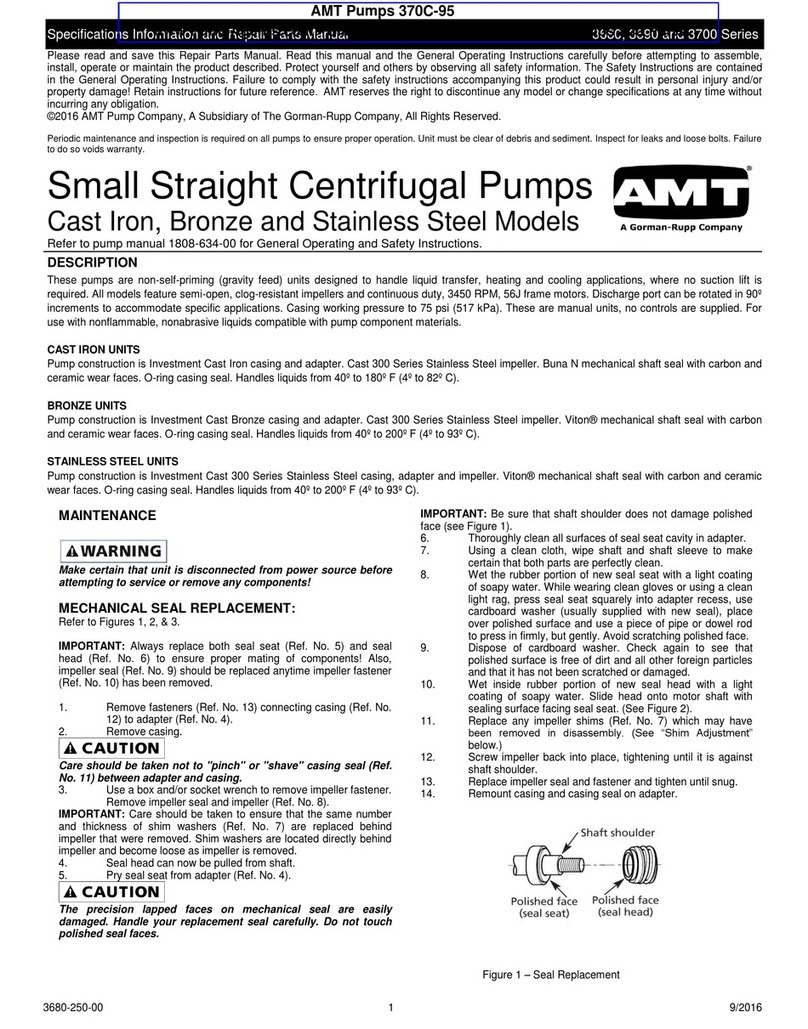
GORMAN-RUPP PUMPS
GORMAN-RUPP PUMPS AMT 3690Series manual

BUSCH
BUSCH COMBI COBRA DS 3181 C instruction manual

VITO
VITO AGRO VIMB15A instruction manual
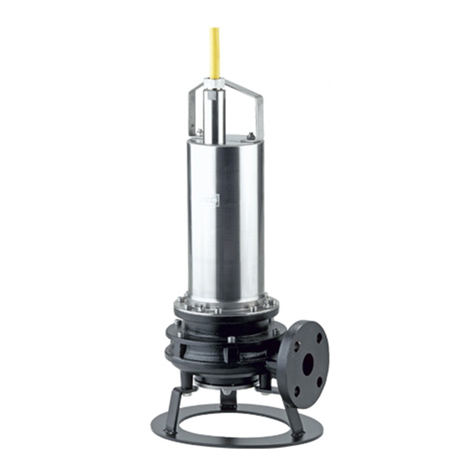
Wilo
Wilo Drain MTS 40 Series Installation and operating instructions

Agilent Technologies
Agilent Technologies VS PD03 installation instructions

Metabo
Metabo HWA 5500 M Original operating instructions
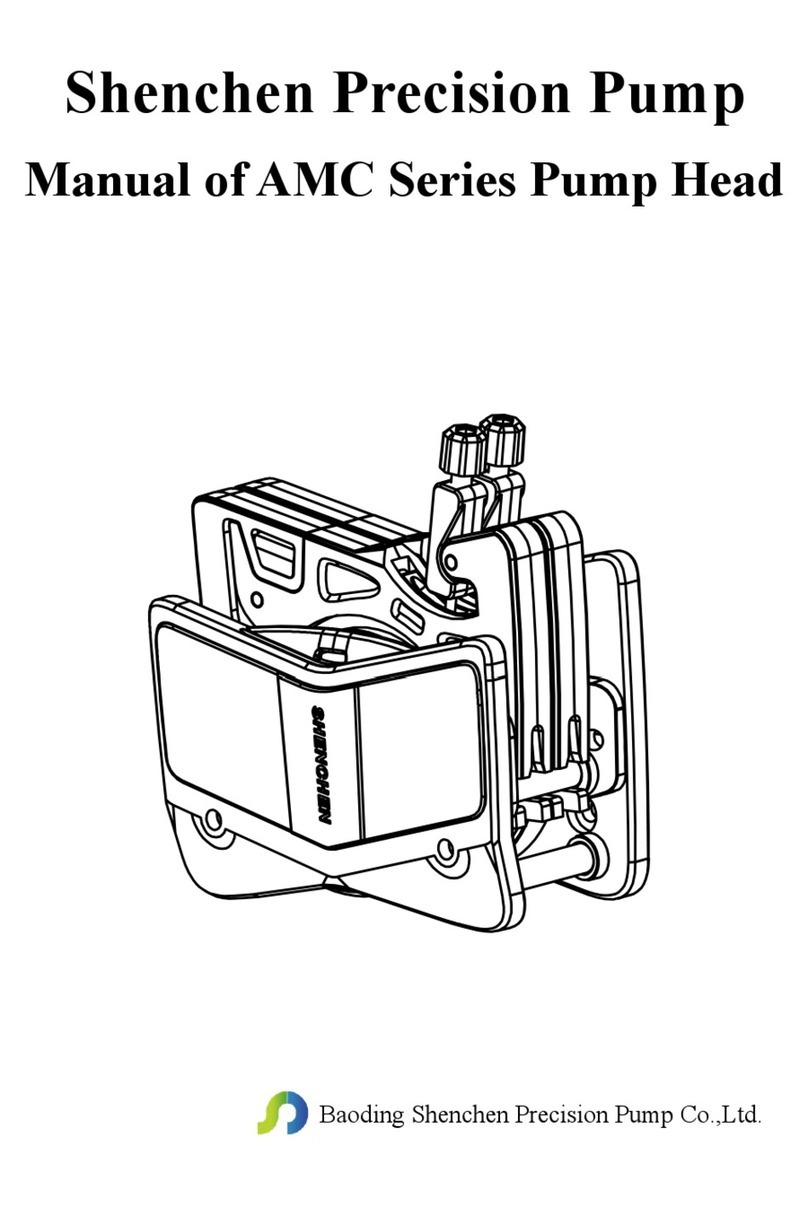
Shenchen
Shenchen AMC Series manual

Xiaomi
Xiaomi HIMO user manual
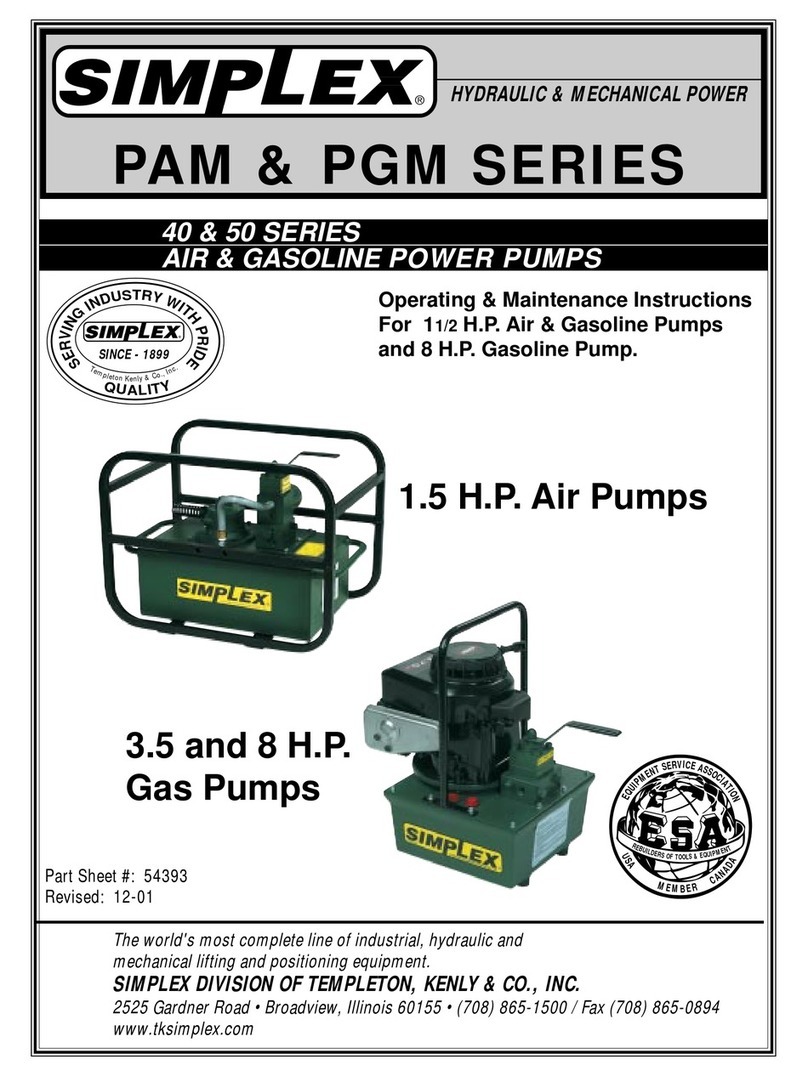
Simplex
Simplex PAM Series Operating & maintenance instructions

Agilent Technologies
Agilent Technologies TriScroll 300 Series MODULE REPLACEMENT MANUAL

KSB
KSB MAMMOUTH 25 Supplementary Operating Manual

BLACKMER
BLACKMER MAGNES Series Installation, operation and maintenance instructions
